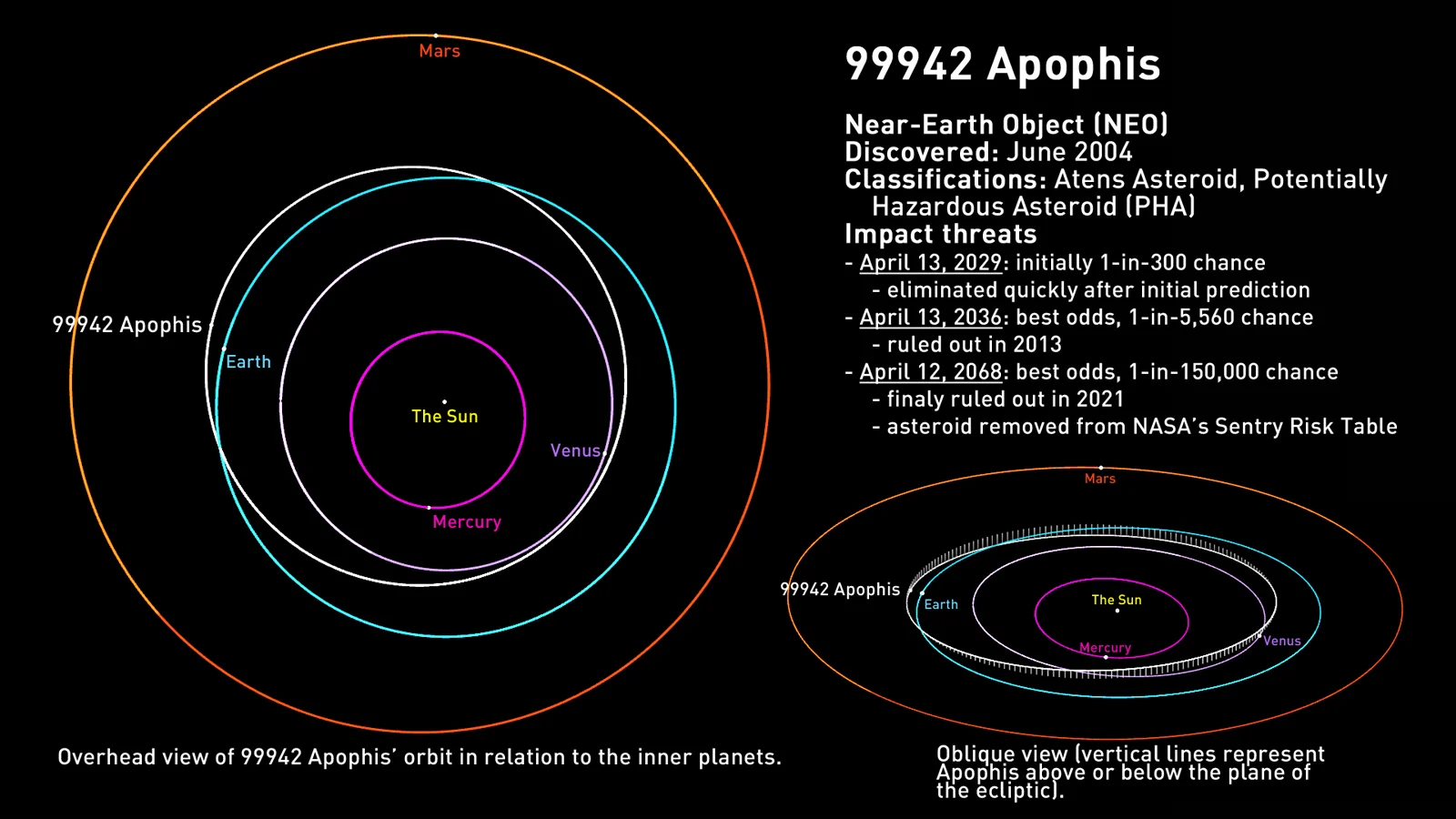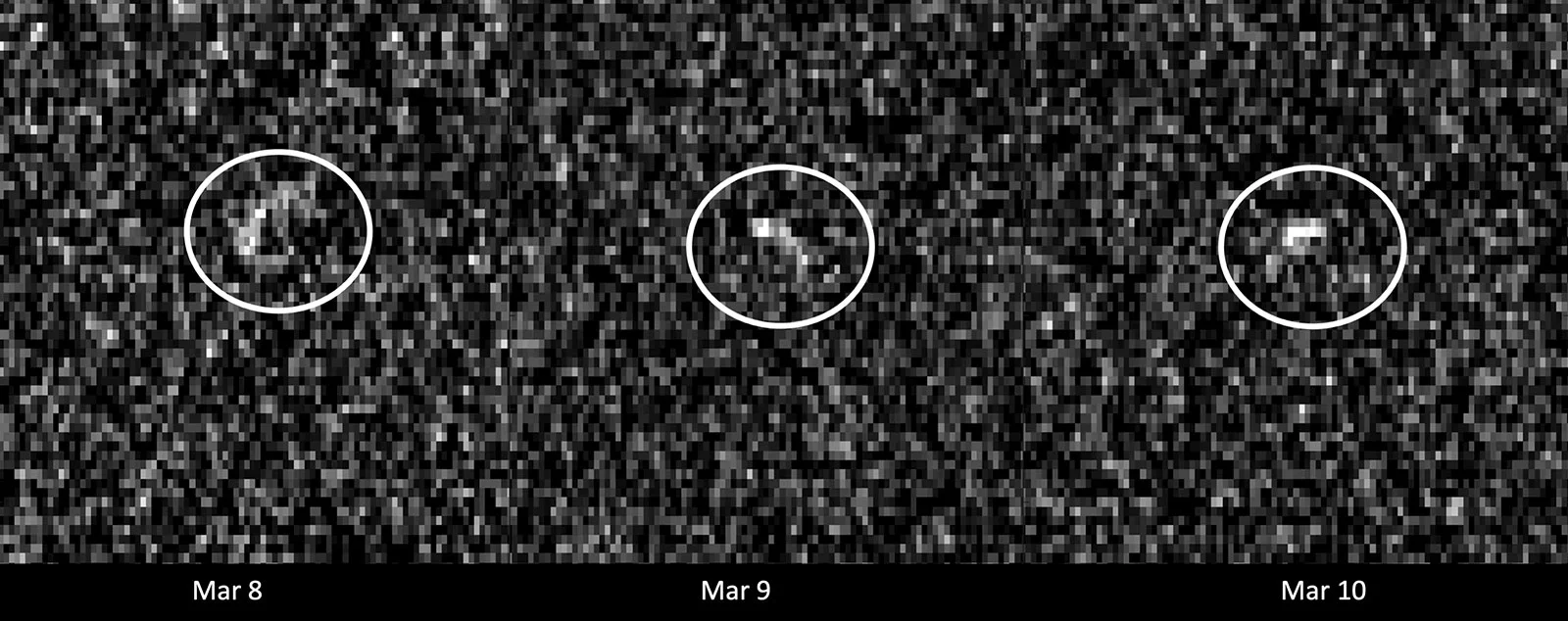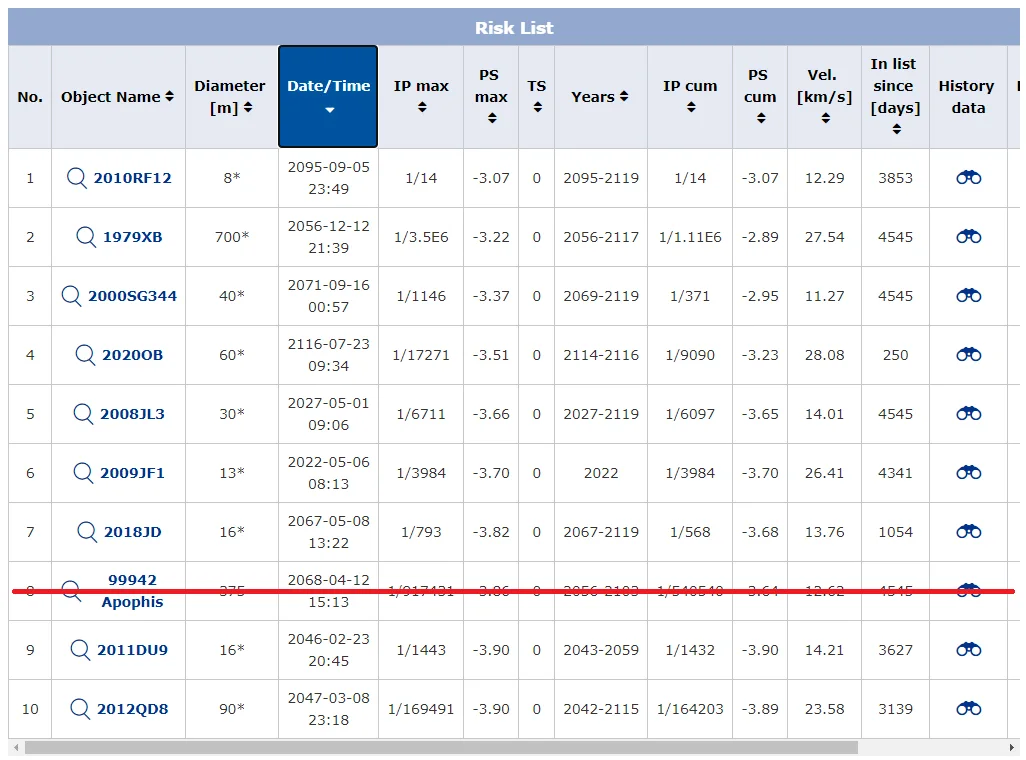
Safe from Apophis: Giant asteroid is now ruled out as a threat to Earth
While there were still concerns about a 2068 encounter with this massive asteroid, new observations of Apophis have now completely ruled out any threat.
A giant asteroid named Apophis has caused worries for both astronomers and the general public for years. With the latest radar observations by NASA, though, everyone can now relax. It turns out that this space rock was never a real threat to us, and it poses no threat to Earth for at least the next century.
First spotted in June of 2004, near-Earth asteroid 99942 Apophis has caused more than its fair share of drama. Up until last week, a glance at NASA's list of asteroid impact risks would find Apophis always near the top. Once ranked as the greatest potential asteroid risk to Earth, shortly after its discovery, Apophis has proved itself to be a challenge over the past decade and a half. As astronomers gathered further observations of the asteroid, they continued to refine their orbit estimates and gain a better understanding of exactly what level of threat it represented.
At one time, though, as they eliminated one potential impact threat from Apophis, another would pop up in its place.

This diagram plots Apophis' orbit from two viewpoints and highlights the details of the asteroid and its most high-risk potential impacts. Credit: NASA/JPL-Caltech/Scott Sutherland
Apophis' initial April 2029 potential impact was crossed off the list just days after it was first announced. The discovery of more observations of the asteroid, which were unknowingly recorded before its official discovery date, helped refine its orbit just enough to reduce that risk significantly. Still, the extremely close 2029 flyby opened up another potential for impact in 2036. During that encounter, there was a possibility of Apophis flying through what NASA called a "gravitational keyhole." If the asteroid passed through one tiny region of near-Earth orbit, the planet's gravity would pull on it just enough that in April of 2036, the asteroid would return to hit Earth.
Although observations of Apophis in early 2013 allowed astronomers to rule out the 2036 impact risk, NASA still listed a dozen possible (but far less likely) impacts between 2060 and 2105. The most problematic of these was April 12, 2068, with around a 1 in 380,000 chance. A recent study even further highlighted this 2068 risk, as astronomers observed the effects of heat radiating from Apophis' surface, causing what's known as Yarkovsky acceleration. With the tiny but constant changes to Apophis' orbit due to this acceleration, there was no ruling out the slim chance that Apophis posed a danger to Earth.

This composite image shows three radar views of 99942 Apophis gathered by the Goldstone and Greenbank Observatories on March 8, 9 and 10, 2021. At the time, the asteroid was 17 million km away, and each pixel of the image has a resolution of 38.75 meters. Credit: NASA/JPL-Caltech and NSF/AUI/GBO
This changed, though, with new radar observations taken by NASA's Goldstone Observatory in California and the Greenbank Observatory in West Virginia. On March 6, 2021, Apophis passed Earth at a distance of 17 million kilometres or roughly 44 times the distance to the Moon. Based on these observations, astronomers have now confidently ruled out any impacts from Apophis, either in the near future or anytime in the next century.
"A 2068 impact is not in the realm of possibility anymore, and our calculations don't show any impact risk for at least the next 100 years," Davide Farnocchia, a scientist with NASA's Center for Near-Earth Object Studies (CNEOS), said in a statement. "With the support of recent optical observations and additional radar observations, the uncertainty in Apophis' orbit has collapsed from hundreds of kilometres to just a handful of kilometres when projected to 2029. This greatly improved knowledge of its position in 2029 provides more certainty of its future motion, so we can now remove Apophis from the risk list."

99942 Apophis officially crossed off of the European Space Agency's (ESA) asteroid risk list. Credit: ESA
"The discovery of Apophis and early work done to track and understand its orbit, occurred when today's Planetary Defence activities were still in their infancy," Juan Luis Cano, from European Space Agency's Near-Earth Object Coordination Centre, said in an ESA press release.
"That this happened at such an early period in the discipline served as strong motivation to improve our capabilities to accurately predict the motion of these interesting and potentially dangerous objects," he explained. "With today's removal of Apophis from the Risk List, we are closing a very enlightening chapter in the history of Planetary Defence."






